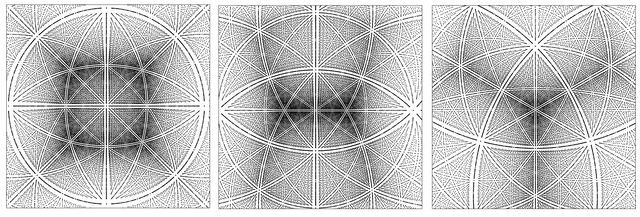Using neutron scattering to understand magnetism

In this post, I aim to provide some qualitative understanding of some of the ways we can use neutrons to understand magnetism.
Neutrons are a powerful probe of condensed matter allowing us to characterise both the structure and magnetism of a sample. This is as a result of their zero electric charge, allowing them to penetrate deep into the bulk, along with their non-zero spin state which facilitates magnetic interaction with the unpaired atoms/ions in the sample.
The total angular momentum of the neutron is I=1/2, and the magnetic moment is very much smaller than that of the electron. The interaction potential is small, and the Born approximation is valid.
Neutrons are created using two different methods. The first is the familiar nuclear fission process, and the second is a process called spallation where a fast proton is incident on a heavy nucleus such as U or Hg. Many modern neutron sources such as the ESS use spallation to generate neutrons for use in scattering experiments.
Neutrons reveal the structure and dynamics; that is, where the atoms are localised and what interactions are happening between them. An example of the former is the solution of the magnetic unit cell - finding out the repeating 3d arrangement of spins that the magnetism of the sample is made up from, and an example of the latter is characterising spin wave excitations.
In experiments, we recover a series of peaks at different wavevectors, corresponding to different reflections of planes within the sample. The patterns are analagous to those obtained via the perhaps more familiar X-ray diffraction. The image below is a simulation of the scattering patterns obtained for a perfect simple cubic single crystal in Laue mode. From left to right: beam incident on (100), (110), (111).

Now, there is a lot of different information about the magnetism that we can recover from our scattering data. Long range ordering of magnetic moments can be inferred from magnetic Bragg scattering. Scattering from impurities (vacancies, substitutions, etc.) is called diffuse scattering and it can tell us about the short range correlations of magnetic moments. Small angle scattering can tell us about excitations such as Skyrmions. Inelastic scattering (incident and final wavevectors are not equal, there is non-zero energy transfer to the lattice) tell us about crystal field excitations and collective excitations of electron spin (magnons, quantised spin waves).
It's important to note that the neutron only 'sees' the component of the magnetism that is perpendicular to the scattering vector. If the magnetisation is perpendicular to the scattering vector then the scattering will be absent. Since this information comes from a projection operation, we lose information about the phase, but by using polarised neutrons we can access both the magnitude and the phase information of the magnetic scattering.
As an example, antiferromagnetism was first detected using neutron scattering in 1949 by C.G. Shull of Bell labs. A scattering pattern was taken at both room temperature and at 80 K. By comparing these two patterns, a difference in the peak profiles was found and this was attributed to antiferromagnetic ordering.
To look at short range correlations, we use diffuse scattering. If we see a lot of this diffuse scatteing around a magnetic Bragg peak, it is a good indication of some kind of short range order. To understand our data however, it is very important to have a complete understanding of the kind of magnetic defects we have in our sample, otherwise it's easy to make false inference about the underlying magnetism as the defect itself can mask the magnetism. In a collinear spin system such as a ferromagnet, a spin-0 defect will not cause any local or long range change to the magnetism because it's too insignificant to change the strong effective exchange field felt by all the other spins pointing the same way. In a frustrated system however, spins are non-collinear, so a magnetic defect can have a profound effect on the spins, causing spin rotations or flips to propagate throughout the sample.
Image references/credit used in this post
1. https://www.eurekalert.org/pub_releases/2014-12/il-nfo121014.php
2. http://iopscience.iop.org/article/10.1088/0034-4885/74/12/124504
Congratulations @diracdnb! You received a personal award!
You can view your badges on your Steem Board and compare to others on the Steem Ranking
Do not miss the last post from @steemitboard:
Vote for @Steemitboard as a witness to get one more award and increased upvotes!
Congratulations @diracdnb! You received a personal award!
You can view your badges on your Steem Board and compare to others on the Steem Ranking
Vote for @Steemitboard as a witness to get one more award and increased upvotes!